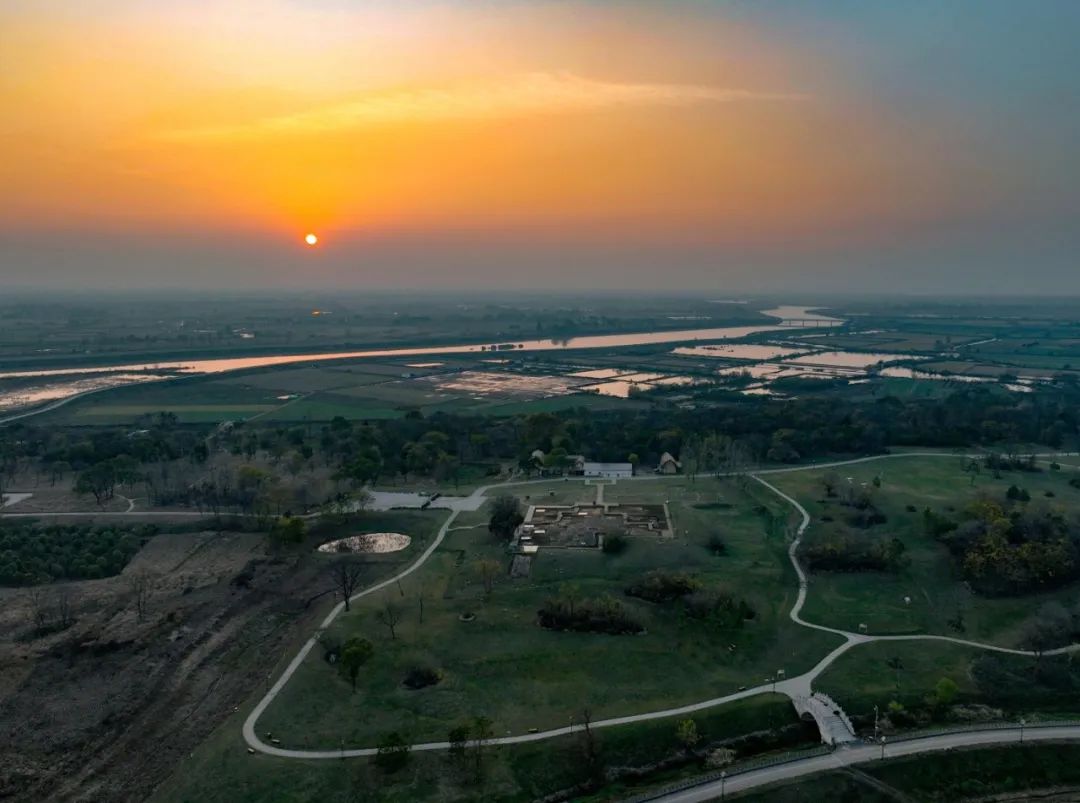|
On December 24, China Media Group (CMG) released the top 10 national and international archaeological news for 2022, and the site of Lingjiatan relics in Hanshan County, Ma'anshan City was selected. 
In 2019, Lingjiatan relics site was included in a significant project "Archaeological China - research on the regional civilization model of the lower reaches of the Yangtze River" of the National Cultural Heritage Administration. The site was also considered one of the five core regional settlements of the Yangtze River basin in the "Project to trace the origins of Chinese civilization (V)". 
Anhui Provincial Institute of Cultural Relics and Archaeology has conducted several active excavations at the Lingjiatan relics from 2020 to 2022 under the approval of the National Cultural Heritage Administration. The excavation locations are all in a large area of red burnt clay remains. Due to park construction, there were also digs at the western side of the tombs and the northern part of the outer trenches in 2021. 
The largest stone Yue unearthed The area of the red burnt clay remains is located in the middle of the ruin site, with an excavated area of 2,000 square meters. The excavation results show that the remains are rectangular in shape, 88 meters long from north to south, and 40 meters wide from east to west, with a recovered area of about 3,400 square meters in total. The average thickness of the red burnt clay, which is artificially paved, is 1.5 meters. Large buildings have already been discovered at the bottom of the excavated area. 
The largest jade Huang unearthed and pieces of other jade wares (Jue and Bi) The area outside the western boundary of the red burnt clay remains is artificially piled up, with a width of 23 meters and a presumed north-south length consistent with the red burnt clay area. It is speculated to be a large building foundation distributed parallel to the west side of the red burnt clay area, forming a gigantic public building site together with the remains. 
Panoramic view of the sacrificial pit A sacrificial pit was found on the west side of the burial area, with a rounded rectangular plan, 4.1 meters long from north to south, 3.5 meters wide from east to west, and 0.3 meters deep. Here, 260 pieces of stone tools, jade artifacts, and pottery were unearthed, including the largest stone Yue (a stone axe used as a production tool) and jade Huang (a semicircle-shaped ornament), of the Chinese Neolithic period seen so far. Some jade objects of new shapes were found at the same time, including a unique carving with the head of a dragon This sculpture is carved with exquisite craftsmanship, with one end in the shape of a pig-like dragon head curving slightly upward and the other end pointed and tapered. Such a design is the only one found in the prehistoric archaeological discoveries of China, indicating great significance to the study of China's prehistoric jade system and ancient ritual system. 
A uniquely shaped carving with the head of a dragon unearthed from the Lingjiatan relics site The discovery of large-scale high-grade public buildings, as represented by the red burnt clay remains, offers a clear sign that high-grade public ceremonial buildings exist in Lingjiatan and have ritual functions. As one of the origins of Liangzhu civilization and a key site in the civilizational evolution in the lower reaches of the Yangtze River, these new discoveries of Lingjiatan relics have provided precious information for deepening the study of the origin, formation, and development of the Chinese civilization.
Lingjiatan Chronology 1987 The first and second excavations at the Lingjiatan relics unearthed more than 200 pieces of exquisite jade artifacts. 1998 The remains of the altar were identified and 500 precious cultural relics such as jade eagles, jade dragons, and jade figures were discovered. The event was selected as one of China's top ten new archaeological discoveries for the year. 2001 Approved by the State Council as a national key cultural relics protection unit. 2013 Lingjiatan Archaeological Site Park was included in the second batch of the national archaeological site park project list. 2022 The active excavation of the red burnt clay remains area was launched again.
|